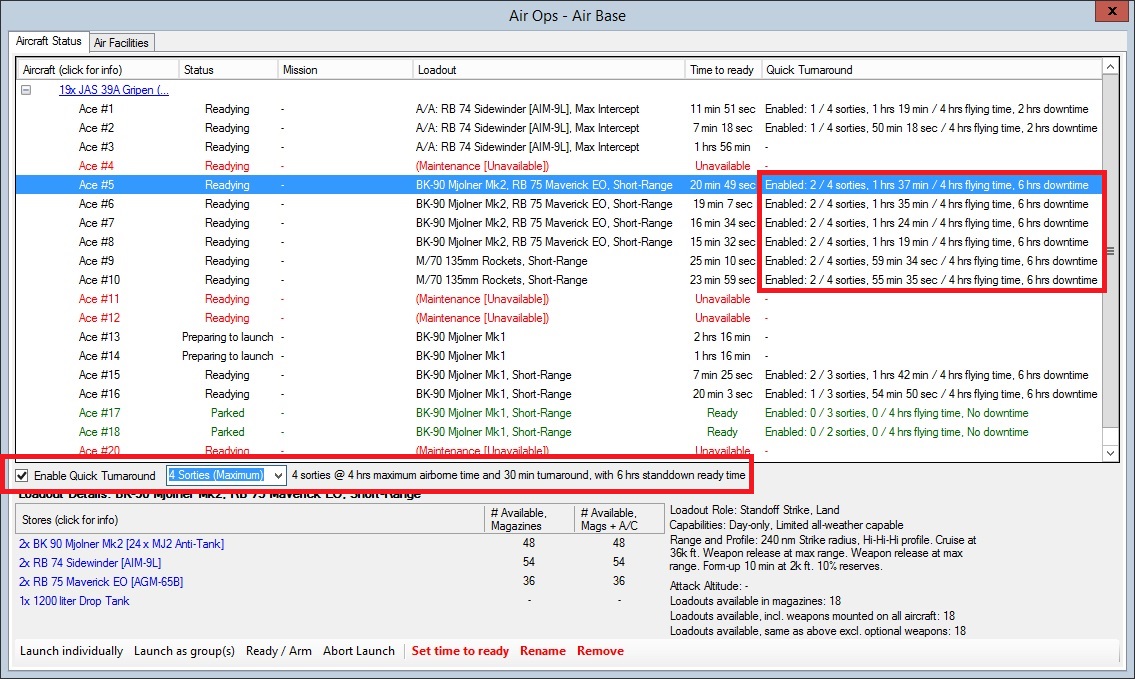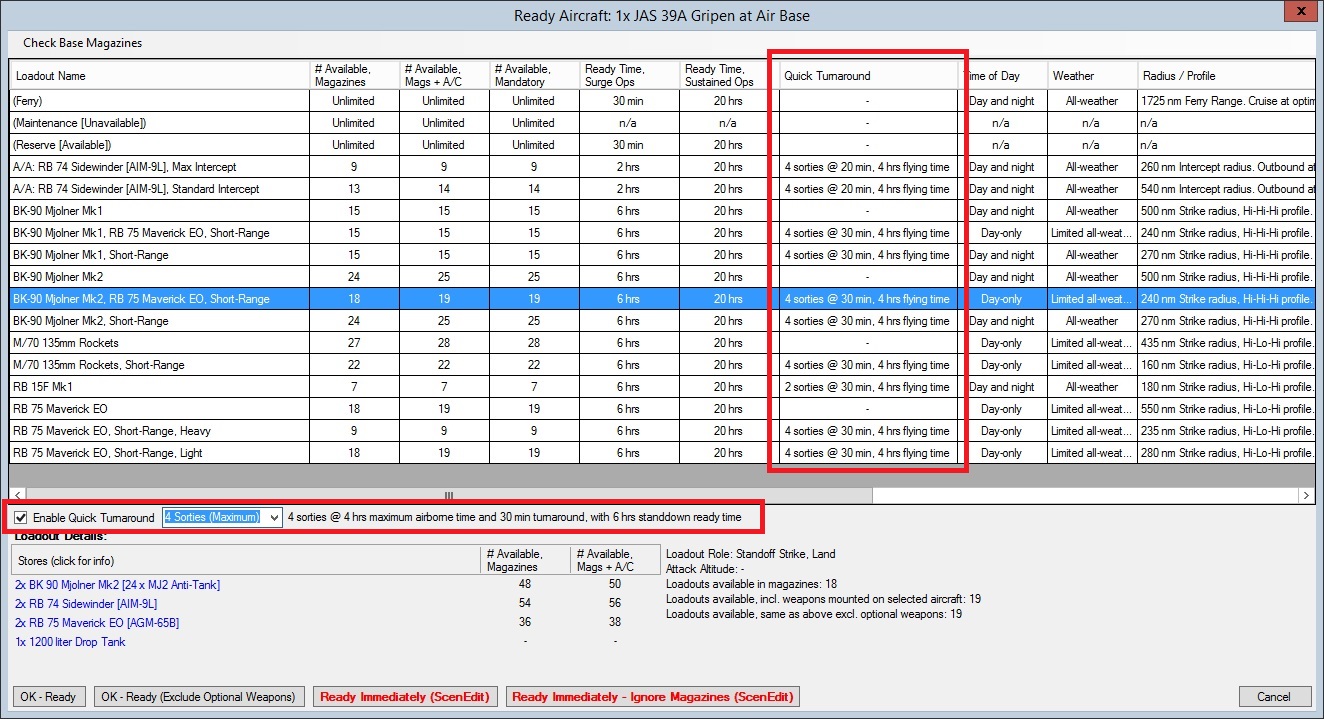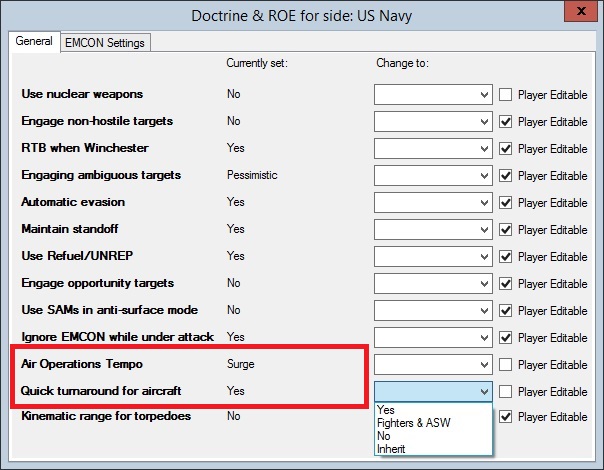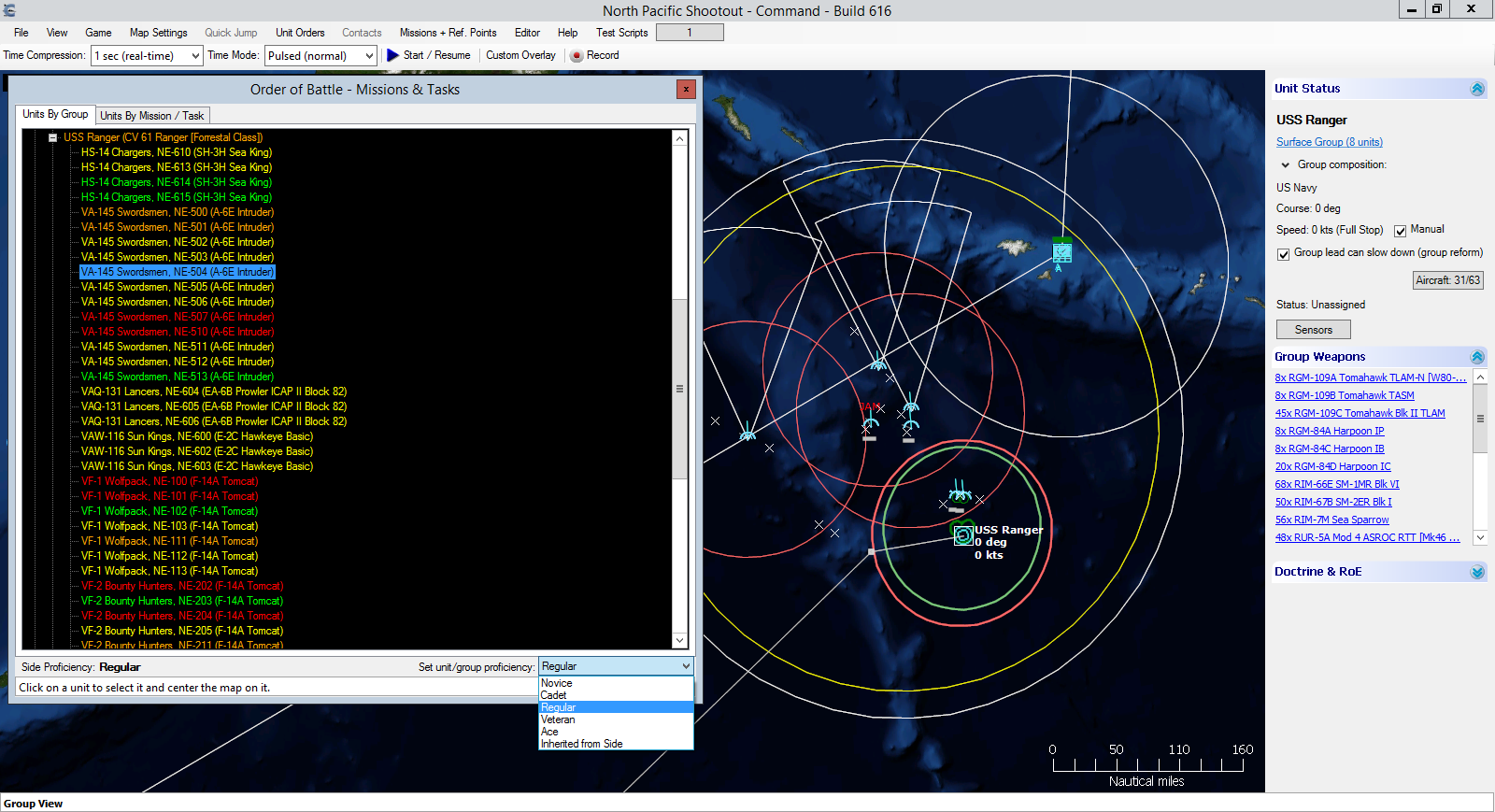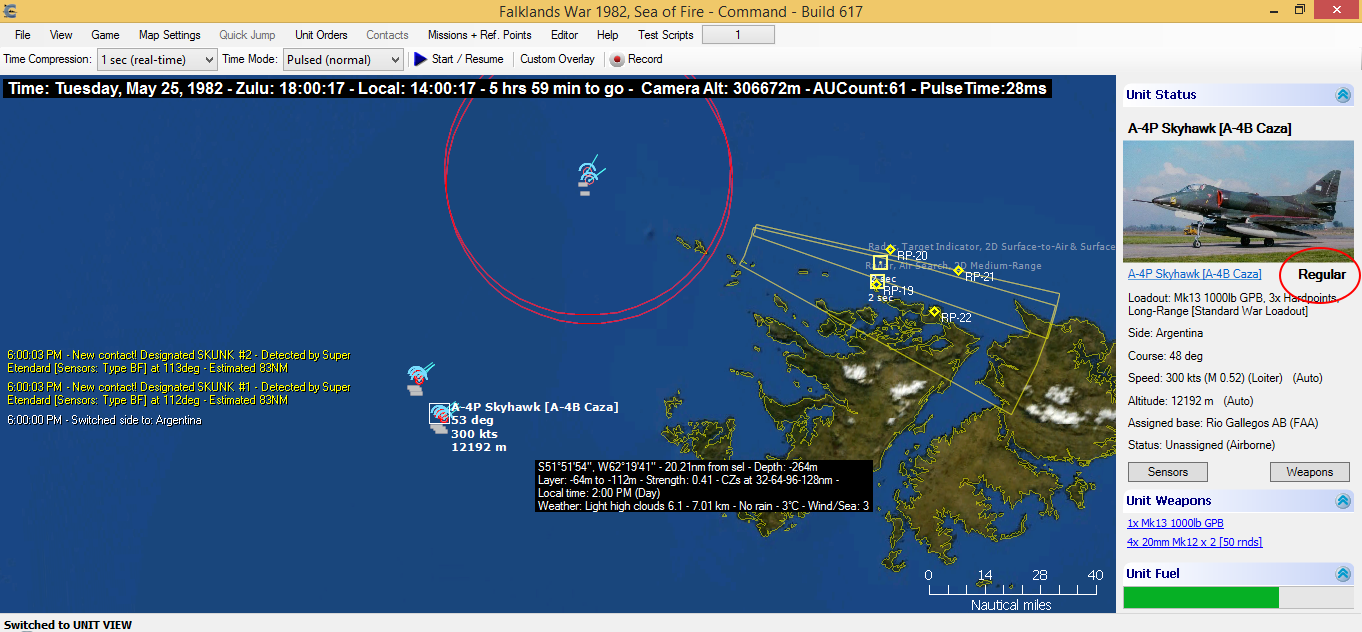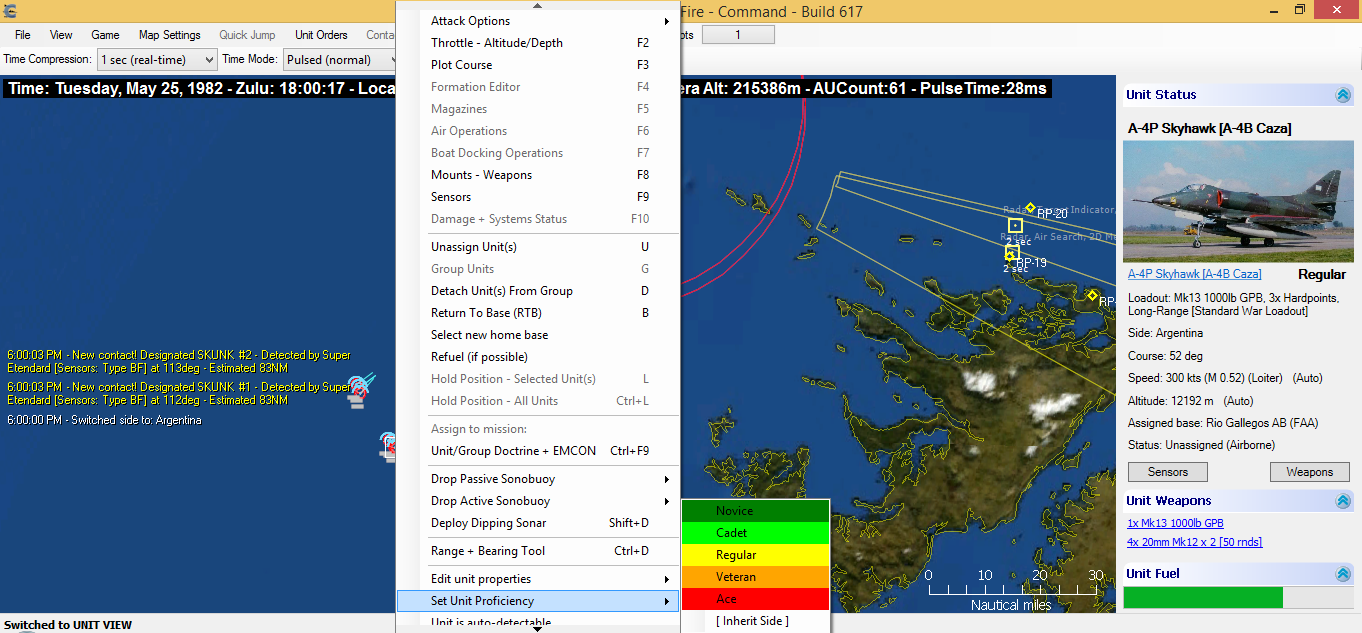Command v1.06 – The new features Part I
As usual, it’s been a very busy time for the WarfareSims crew.
The September Steam launch was very successful and once again exceeded sales estimates by a wide margin, as well as providing us with some very valuable feedback for the way forward. The Christmas sale is now in effect and again the numbers are very strong. Baloogan, a staunch fan of Command (and not unimportantly a man who shares our vision for it) has joined WarfareSims as an additional member of the development team and is already contributing his valuable skills to the game’s ongoing development.
Version 1.06 is the next major Command public update, expected to be delivered within December. Simply put, there is a lot in it. It has something we have been working on for a long time (and have been wishing for since the days of Harpoon2/3), lots of improvements directly requested by the user community and a veritable armory of new scenario-editing tools that are certain to make scenario authors salivate. Let’s take a look.
Surge & Quick-turnaround times in Air Operations
The rationale for this new feature is comprehensively explained on a separate article, so here we’ll discuss the “what” and “how” rather than the “why”.
In short, players can now keep a constant sustainable “campaign” operational tempo as well as go to “Day-1” super-high sortie rates with very fast (30 mins or even less) turn-around times for loadouts supporting them. There is a price for this however: After a certain period of hyperactivity, aircraft _have_ to stand-down for an extended period of maintenance (and pilots badly need to rest).
The super-high sortie rate option (aka “Quick Turnaround” capability) is available only for a specific range of loadout types, typically those that do not need extensive mission briefing and coordination with other assets, for example close air-support (CAS) and air defence loadouts. So for example an A-10A Thunderbolt II can now indeed fly a series of quick CAS sorties but then has to stand down. Relevant loadouts have a “Quick Turnaround” option that allows aircraft to fly a certain number of short duration sorties in quick succession with a maximum overall airborne time limitation. For example, 3 sorties with 4 hours total flying time and 20 minute turnaround between each. The aircraft will then step down for the period set by the loadout’s Surge Operations or Sustained Operations ready time.
Let’s take a look at a practical example. In this screenshot (click for full size) the highlighted JAS-39A Gripen has the QT option enabled, which allows a maximum of four rapid-fire missions (just 30 mins turn-around) to be flown with a maximum air-time of four hours. On the “Quick Turnaround” column we see that the aircraft has already flown two of the four quick sorties and spent 1 hr 37 mins in-air (out of the four hours total available), after which it will be forced to stand down for six hours for rest and maintenance. It is now up to the player to decide how best make use of the remaining sorties.
It should be noted that aircraft flying Quick Turnaround sorties may be re-armed with a different loadout without having to step down, granted the new loadout is quick-turnaround capable. This means you can fly the first two Quick Turnaround sorties with iron bombs, re-arm with rockets for the third sortie, and cluster bombs for the fourth.
There are three limiting factors for quick turnaround: flying time, number of sorties (land-refuel-rearm-takeoff), and day/night capability. All three are used to determine if the aircraft can be quickly turned around to fly another sortie, or has to step down.
The player can easily determine if a given loadout supports quick-turnaround when browising through loadouts on the “Ready Aircraft” window. Here we see that CAS, air-defence and short-range strike loadouts enable Quick Turnaround while long-range strike loadouts, which take a lot more preparation and coordination, do not.
The distinction on whether to have a low (peacetime) or wartime (high) operational time is configurable as a doctrine setting and thus, like all other similar settings, can be configured by both the player and the scenario author at the side-, mission-, group- and individual-unit level. So for example you can simulate an entire country being at peacetime level of activity while one or two bases are kept in high tempo as a “quick reaction” force. Quick-turnaround ability is also configurable as a separate setting. (So for example a base may be on wartime tempo but not be allowed to use super-high sortie rates in order to instead operate on a 24/7-sustainable rate. Keeping up a steady pace is frequently more important than going all-out.)
There is also a corollary benefit from those improvements, which resolves a longtime players bane: When an aircraft, fully loaded and prepped for a mission, switches to a different loadout, it is not punished for it by going through the entire ready cycle again. Instead, only the time necessary for the actual re-arming is considered.
Being able to simulate historically-accurate bursts of air activity without resorting to the ridiculous “30 mins for everything and everyone!” setting of older games has been one of the holy grails of air-ops enthusiasts, and v1.06 finally brings this dream to reality.
Unit-level proficiency values
This is a direct response to a popular user request. When we introduced side-level proficiency ratings, the addition was welcome by players and scen authors alike. A frequent request, however, was to be able to combine different skill levels on the same side so as to emulate groups of forces with different skill or readiness levels, as is common in most military arms.
Pre-v1.06, doing this required the workaround of defining multiple allied sides and setting the proficiency level differently on each of them. Version 1.06 allows definining the skillset on an individual unit level, making this workaround unnecessary.
There are two ways to view and (in ScenEdit mode only) alter the proficiency level of an individual unit:
* Through the ORBAT window:
In this example you can see the individual units being listed in different colors that represent their proficiency levels (from the dark green of novices all the way to the red of the aces). As this shot was taken in Scenario Edit mode, the dropdowm menu for setting the selected unit’s proficiency is also visible. A unit can be set to either auto-inherit its parent side’s overall proficiency level (which is the default behavior) or override it with a custom level of its own.
* Through the “Unit Status” window and the right-click menu:
A unit’s proficiency level appears next to its class DB-hyperlink on the “Unit Status” window:
If running the scenario in editor mode, you can change the proficiency level of one or more units by selecting them, bringing up the unit-context menu (mouse right-click or context-menu key), clicking on “Set Unit Proficiency” and selecting the desired level (or setting it to auto-inherit from side):
Apart from making them configurable on a unit level, skill values now also have an even greater effect (e.g. when performing unguided weapon attacks, and in damage control) and their effects / modifiers are intensified. Novices and to a lesser extent cadets are now really lamb to the slaughter, while ace crews almost walk on water. Without knowing in advance just how capable an adversary you are facing (unless reliably pre-briefed), the ghastly uncertainties of combat become even more pronounced.
Coming up next: Part II – Game-changer, thy name is Lua
New Command scenario: The Grecale Affair
Author: Mark Gellis
This scenario assumes that tensions have increased between Italy and Tunisia.
——————————————————-
A delta template .ini file has been included in the .zip file to assist in updating the scenario to any future versions of the database.
———————————
*** OPERATIONAL: PRIORITY ***
ATTN: Commanding Officer, Grecale
SITUATION
Disagreements with Tunisia over the use of the Strait of Sicily continue. In particular, Tunisia has made several claims about violations of its territorial waters by Italian fishing boats and other commercial vessels. They have warned us that further violations may result in the use of force.
Our government believes that a diplomatic solution to this problem will be reached soon, but that in the meantime it is important to maintain a naval presence in the Strait.
ENEMY FORCES
In the event that hostilities break out, Tunisia has only limited naval and air capabilities, but these should still be taken seriously. While the elderly missile boats and F-5E/F Tiger IIs Tunisia uses are obsolete by our standards, they do represent a significant amount of firepower.
FRIENDLY FORCES
The Grecale is the only vessel in the area available for this mission.
Available aircraft at Trapani are chopped to your command.
MISSION
Proceed to the Strait of Sicily. Conduct patrols in the area marked on your tactical map and gather intelligence on Tunisian forces in the Strait until you receive further orders.
EXECUTION
Do not initiate hostilities with Tunisian forces. Be careful not to violate Tunisian territorial waters. If Tunisia initiates hostilities, you are free to defend yourselves and to take appropriate actions to protect civilians from harm.
COMMAND AND SIGNAL
Command: Grecale
Signal: EMCON State C (Unrestricted Emissions)
Good luck.
New Command scenario: Excellent Loon
Database – CWDB
Author – Mark Gellis
This scenario assumes that tensions increased between the Soviet Union and Canada in the mid-1970s.
By 1976, Canada had all but declared it would not permit Soviet military vessels to operate freely in its waters, or even in its Exclusive Economic Zone, except for innocent passage. And some of the more conservative members of Canada’s government have even questioned whether any passage of Soviet naval vessels through Canadian waters should be considered “innocent.”
The Soviets, partly to gather intelligence–what better time to test a potential adversary than when they are supposedly doing their utmost to detect your ships and submarines?–and also in the hopes of embarassing the West, have increased their patrols near Canada.
————————————————————————
Author’s Notes
For those unfamiliar with it, the loon is an aquatic bird somewhat larger than a duck. It is an excellent swimmer and can hold its breath and remain underwater for more than a minute at a time while it hunts fish and other prey.
Thanks to Chris (aka Randomizer) for some very helpful suggestions.
————————————————————————-
*** FLASH *** FLASH *** FLASH ***
ATTN: Commanding Officer, Athabaskan
You are instructed to immediately initiate OPERATION EXCELLENT LOON.
INTEL/SITREP
We have reason to believe Soviet submarines have entered the Gulf of Saint Lawrence, in direct challenge to our declaration that foreign states will not be allowed to “conduct military operations, including training” in these waters without our express permission.
ENEMY FORCES
Current sonar data suggests two Soviet submarines are presently in the Gulf of Saint Lawrence, a ballistic missile submarine and a nuclear attack submarine. The latter is probably on station primarily as an escort to the ballistic missile submarine.
FRIENDLY FORCES
Your task force consists of DDH 282 Athabaskan, DDH 265 Annapolis, and S 74 Okanagan.
Designated aircraft at CFB Greenwood are chopped to your command.
MISSION
Locate the Soviet ballistic missile submarine in the Gulf of Saint Lawrence and force it to leave Canadian waters. This can be accomplished by closing to within one or two miles of the submarine, getting right on top of her and staying there, pinging her relentlessly with your sonar, and continuing to do this until it is obvious that we have discovered her and have a hard fix on her location.
As ballistic missile submarines rely on not having their location revealed in order to perform their missions, it is likely that once the Soviets understand we have a clear fix on the exact location of their submarine that they will move it out of the Gulf of Saint Lawrence.
EXECUTION
Focus your attention on the ballistic missile submarine.
Do not under any circumstances fire on Soviet submarines unless you receive specific orders to do so or are under attack.
COMMAND AND SIGNAL
Command: Athabaskan
Signal: EMCON State C (Unrestricted Emissions)
Good luck. God save the Queen.
New Command scenario: Smooth Trail
 Database – DB3000
Database – DB3000
Author – Mark Gellis
This scenario assumes that the Soviets launched a massive offensive against Western Europe on August 1, 1988.
*** FLASH *** FLASH *** FLASH ***
ATTN: Commanding Officer, Colbert
You are instructed to initiate OPERATION SMOOTH TRAIL.
INTEL/SITREP
The War is now ten days old. You are lucky, my friend, to be at sea; the devastation on both sides is simply beyond description. Much of Europe lies in ruins. The Soviet advance has been stopped, although at terrible cost, and they presently control much of West Germany, Denmark, and Greece.
Satellite images show that a Soviet task force is about to enter the Denmark Strait, en route to the North Atlantic. It must be stopped.
ENEMY FORCES
Your target is a Soviet amphibious task force. It consists of at least two warships, and unknown number of submarines, and at least two amphibious assault vessels. Its final destination is not known, although it is possible that it is headed for the Mediterraean.
FRIENDLY FORCES
Your task force consists of four French warships–Colbert, Dupleix, De Grasse, and Jean de Vienne–and one French submarine, Casabianca.
Russian missile strikes have left most of the airfields on Iceland in shambles. One of the few surviving airfields is Husavik. Two German Tornados now operating out of Husavik have been chopped to your command.
MISSION
Intercept and destroy the Soviet task force.
EXECUTION
The Soviets appear to be headed for the Denmark Strait. Intercepting them as they enter the North Atlantic, to the west of Iceland, is probably your best option. Its only serious drawback is that the Soviets will almost certainly be expecting you.
In case you were wondering, the name of your mission was suggested by an American naval officer, apparently in reference to the weather you are currently experiencing. The Americans have such a droll sense of humor.
COMMAND AND SIGNAL
Command: Colbert
Signal: EMCON State C (Unrestricted Emissions)
Good luck. Vive la France!
New year, new Command release and new community scenario pack
 The new year is in, and both the WS crew and the Command community have been busy as ever.
The new year is in, and both the WS crew and the Command community have been busy as ever.
After the release of v1.02, a number of users reported two startup issues. These were investigated extensively during the holiday break (including remoting into players’ PCs in order to witness the problems in detail) and a new update, Build 483, has been released within the last weekend. This update fixes the startup problems and also addresses a large number of player-requested DB additions. It also includes the changes of previously released Build 481 such as the ability to manually mark a contact as neutral/friendly (another popular player request).
In addition, Miguel Molina has updated the Command Community scenario pack with a new release! Scenario map overlays have also been updated.
This new release includes 8 brand-new scenarios:
- USN ASW Exercise, 2006
- Frisian Flag, 2012
- Buenos Aires Express, 1982
- Coral Magpie, 2018
- The Vanuatu Crisis, 1996
- Red Episodes – Stop that Convoy, 1989
- Red Episodes – SOS SOSUS, 1989
- Red Episodes – Boomer to Sea, 1989
You can download the new scenarip pack and overlays HERE.
With this release, the total number of scenarios (official + community) publicly available for Command is now 73!




